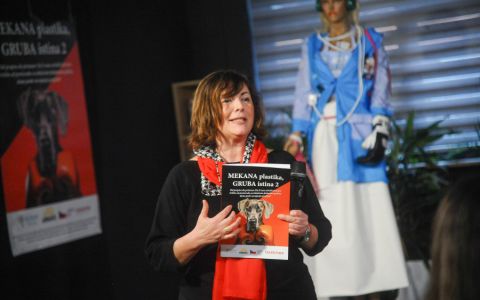Members of the Reactive Monitoring Mission of the UNESCO World Heritage Centre and ICOMOS (International Council on Monuments and Sites) have started their visit to Prague. Today they met with representatives of five civic associations which criticize the intended construction of skyscrapers and devastation of the historic centre of Prague through insensitive structural interventions. Director of the World Heritage Centre Francisco Bandarin said that the UNESCO committee had been paying special attention to the capital city of the Czech Republic. According to him processes occurring in Prague will have an impact on the development of other European cities.
“We informed the representatives of the world organizations that problems in Prague are persistent and pointed out that while they are here collecting background information for their decision on high-rises, the Czech authorities have been intensely working to issue planning permits for the construction of two high-rises on the Pankrác Plain claiming that being on the UNESCO World Heritage List is just a mere formality,” said Martin Skalský from the Arnika Association who had taken part in the talks.
Conversation focused also on devastation of Prague’s historic centre. “We talked about the construction of underground garages in the city centre, destruction of roofscape by attic additions, conversions of historical buildings into hotels and other problems,” said Skalský. According to him in addition to the high-rises project the mission’s goal is also to explore whether the Czech Republic has been sufficiently protecting the Prague Historical Town Reserve which is part of world heritage.
Representatives of Arnika. Studio for the Environment, Pankrác Citizens’ Initiative, Citizens Afflicted with the North-South Arterial Road and Pankrác Society then handed over to the representatives of the Reactive Mission their statements, photographs and documentation on the proposed high-rises.
According to Marie Janoušková from Pankrác Citizens’ Initiative the talks were short but very pleasant . “While the City Hall and the Ministry of Culture imposed embargo on all information connected with the international mission, Mr Francisco Bandarin and Mr Bruno Maldoner were open to discussion and in addition to the problems of contemporary Prague they also showed interest in local newspaper articles concerning their mission,” said Janoušková. She was though upset about the conditions under which the talks had been held. “We were sitting in a small, windowless room and the representatives of the world organizations were just served tapped water in plastic cups. Such a reception of honourable guests is a disgrace for the whole of Prague,” Janoušková added.
The reactive mission will stay in Prague until Saturday. Its members will be collecting information, holding meetings with various interested groups and exploring a number of places in the city.
The Prague visit of the World Heritage Centre Director is quite a unique event. Prague is the second city, after St. Petersburgh, which Mr. Francisco Bandarin has visited in person on a reactive mission. He said: “As well as the Pankrác Plateau is a precedent for Prague, Prague is a precedent for other world cities. The UNESCO committee attaches extraordinary significance to the current problems of the Czech metropolis. Cities, especially in Eastern Europe, have been developing at a very fast pace with great amount of money available. Therefore good decisions must be made and good examples set,” added Mr Bandarin.






